CENTER FOR BRAIN EXPERIMENT
|
The ultimate object of this laboratory is to clarify the relations between structures and functions in the brain. To study them, a high voltage electron microscope (H-1250M) which is specially designed for biological and medical research is available since 1982. The daily accelerating voltage of the microscope is 1,000kV. The pressure near the specimen position is less than 7×10-6Pa and the magnification ranges 1k to 1,000k times. Transmission images of thick specimens till about 5mm can be taken.
Since this is the only high voltage electron microscope in the biological field in Japan, the collaborative programs are carried out by about 15 research groups from Universities etc. on three projects: 1) Three-dimensional analysis of fine structures of biological specimens 2) High resolution observation of biological specimens 3) Observation of biological specimens in their natural conditions.
Facilities for tissue culture and light microscopy are also provided. Cryostats, microtomes and fluorescence microscopes with a high-resolution colour cooled CCD camera system are prepared for immunohistochemistry. Inverted microscopes with a time lapse video system are prepared to observe cultured cells.
|
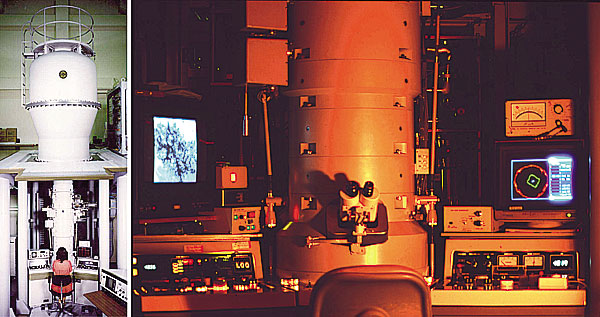 High voltage electron microscope (H-1250M: 1,000kV)
High voltage electron microscope (H-1250M: 1,000kV)
Specially designed for the exclucive use of medical and biological specimens
|
Staff
 |
Associate Professor:
ARII, Tatsuo, PhD
1967 Graduated from Tohoku University, Faculty of Science. Completed the doctoral course in Engineering, Nagoya University. 1972 Research Associate, Nagoya University. 1973 Research Associate, Regensburg University. 1976 Research Associate, Nagoya University. 1979 Associate Professor, NIPS.
Speciality: Electron Microscopy |
 |
Assistant Professor:
FURUYA, Sonoko, PhD
1970 Graduated from University of Tokyo, Faculty of Pharmacy. Completed the doctoral course in Pharmacy, University of Tokyo. 1975 Research Associate, Nihon Medical College. 1978 Research Associate, NIPS.
Speciality: Tissue Culture and Histology |
In order to investigate the brain mechanism underlying our mental ability such as cognition, voluntary movement, thinking, or will, it is necessary to experiment on the human brain. Some non-invasive techniques for measuring brain are certainly useful for the purpose. However, they are still insufficient in their quality of information. To overcome the limitations, researches on the brain are carried out here in both the human subjects and the monkey using many techniques including direct recordings of cortical field potential, magnetoencephalography, and positron emission tomography in complementary manners.
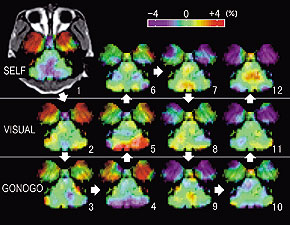
Figure 1. Brain activity during three kinds of movement tasks (a specimen record in one day).
The monkey was engaged in hand movement tasks to get a reward in three different sets of circumstances; i.e. the self-initiated movement task (SELF), the visually-initiated movement task (VISUAL), and the color-discriminating go/no-go task with asymmetrical reinforcement (GONOGO). Arrows and numbers indicate the order in which they were taken. Although the activity fluctuates, a statistical analysis across repetitive measurements can extract the significant activity changes (Figures 2, 3, and 4)
|
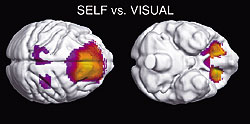
Figure 2. Regions of activated in SELF task.
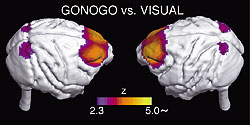
Figure 3. Regions of activation in GONOGO task.

Figure 4. Regions of significant decrease in activity during task repetition in a day.
The decline in the activity of the limbic and prefrontal regions may be a reflection of a decline in the willingness.
|
Staff
 |
Associate Professor:
TSUJIMOTO, Toru, MD, PhD
1986 Graduated from Kyoto University, Faculty of Medicine. 1990 Completed the doctoral course in Medicine, Kyoto University. 1993 Research Associate, NIPS. 1994 Research Associate, Kyoto University. 1999 Associate Professor, NIPS.
Speciality: Neurophysiology |
Computing and network support is indispensable for research activity. In this section, we have a HP ES45 system for data analyses and simulation and two technical staffs support high-speed and reliable network and peripheral device for in-house information service, high-quality digital color printing, etc. Technological developments for the best use of these facilities are also underway.
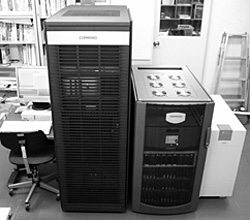
|
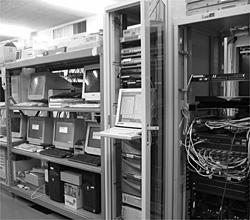
|
Our research subjects include the reproductive biotechnology to understand gamete interactions during fertilization and the development of novel methodology to produce transgenic animals. Among them, we have a special interest in the increasing demand for production of gene-targeted (KO: knock-out) rats because use of rats rather than mice is advantageous in aspects of microsurgery and mapping of brain functions. Embryonic stem cell line and nuclear transfer (cloning) protocol have not yet been established in rats, attributing to slow progress of brain research. At present, we devote all our skills (e.g. in vitro fertilization, animal cloning, microinsemination) to look for the possibility of producing KO rats, and also provide collaborative services to produce transgenic mice and rats by pronuclear DNA microinjection or intracytoplasmic sperm injection (ICSI)-mediated DNA transfer.
| Advanced Reproductive Technology in Rats |
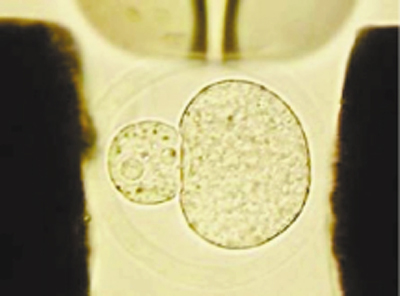 |
A) Nuclear transplantation in rats
Production of cloned rat embryos by serial nuclear transplantation (NT); Somatic cell nuclei are injected into enucleated oocytes (1st NT), and the couplets are activated with a chemical treatment. The karyoplast containing pseudo-pronucleus of the 1st NT embryos and enucleated zygotes are fused by a DC pulse (2nd NT). |
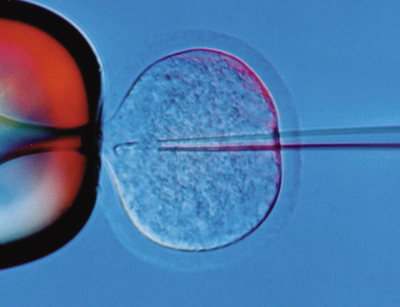 |
B) Intracytoplasmic sperm injection in rats
Production of fertilized rat oocytes by intracytoplasmic sperm injection (ICSI); A single fishhook-shaped sperm head is microinjected into ovulated and denuded oocytes with the aid of Piezo-micromanipulators. |
Staff
 |
Associate Professor:
HIRABAYASHI, Masumi, PhD
1981 Graduated from Faculty of Hygiene, Fujita Health University. 1981 Research Fellow, Laboratory Animal Center, Fujita Health University. 1983 Researcher, Research Institute of Life Science, Snow Brand Milk Products, Co. Ltd. 1992 Group Leader, YS New Technology Institute, Inc. 2001 Adjunct Associate Professor, 2002 Associate Professor, NIPS.
Speciality: Laboratory Animal Science |
 |
JSPS Postdoctoral Fellow:
ITO, Junya, PhD
1999 Graduated from Hiroshima University, Faculty of Applied Biological Science. 2004 Completed the doctoral course in Applied Biological Science, Hiroshima University. 2004 JSPS Research Fellow.
Speciality: Reproductive Biology, Developmental Engineering |
|













